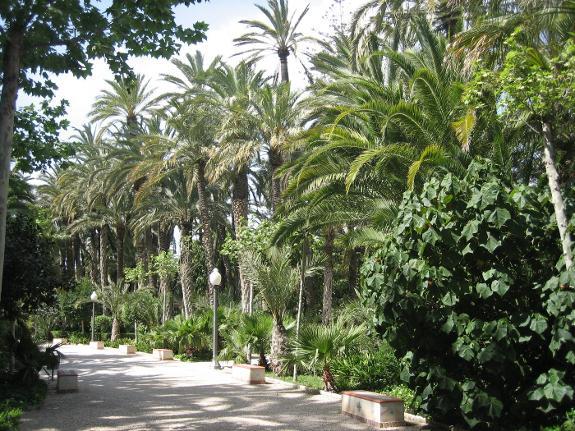

Secciones
Servicios
Destacamos

Debbie Bartlett
Friday, 30 November 2018, 10:29
Many people believe only historical buildings can be classified as Unesco World Heritage Sites, but the Elche date palm grove, known as the 'Palmeral de Elche' in Spanish, proves them wrong.
This enormous plantation of date palms is the only one of its type in Europe and the largest outside Arabian countries. It was created by the Moors around a thousand years ago, using techniques used in North Africa to encourage the trees to grow in this different environment, and the application for world heritage status was accepted in the year 2000 because the palm grove forms a unique agricultural landscape and one which has defined the identity of the town of Elche, which is in Alicante province, in Valencia.
The beautiful date palms in these orchards are planted in single or double rows, following the lines of the ancient irrigation canals - which are still operative - and this was of special interest to Unesco when considering the application. The Moors used water from the Vinalopó river to water these trees, and the system used today is practically the same.
When announcing that the Palmeral was now a World Heritage Site, Unesco said that the transfer of landscape and agricultural practices from one culture and continent to another (Moorish North Africa to Christian Europe) had played a part in its decision.
These days there are about 97 different orchards in the Palmeral, and a total of 70,000 trees. Some of them are more than 30 metres tall and are believed to be around 300 years old.
One of the palms is particularly famous: it is known as the 'Imperial Palm' and was named after Elizabeth, or Sissi, the Empress Consort of Franz Joseph who visited the plantation in 1894. This particular tree has seven branches and is in the shape of a candelabra, and it was dedicated to her.
In the 1920s the authorities realised that the palm grove needed some sort of protection, and the first regulations of this type were introduced in the 1930s. However, it was not until 1986 that the Valencian regional government brought the current protection law into force, as a way of regulating use and safeguarding the Palmeral from any changes which could potentially affect its original layout and its maintenance.
Some years ago gardeners at the Palmeral found that, like many other palm trees in Spain, some had been affected by the 'red palm weevil', and took pest control measures to prevent the problem spreading to others. After so many years, these date palm orchards where local people love to stroll are an important part of life in Elche, and nobody would want them to disappear.
Publicidad
Publicidad
Publicidad
Publicidad
Esta funcionalidad es exclusiva para registrados.
Reporta un error en esta noticia

Debido a un error no hemos podido dar de alta tu suscripción.
Por favor, ponte en contacto con Atención al Cliente.

¡Bienvenido a SURINENGLISH!

Tu suscripción con Google se ha realizado correctamente, pero ya tenías otra suscripción activa en SURINENGLISH.
Déjanos tus datos y nos pondremos en contacto contigo para analizar tu caso

¡Tu suscripción con Google se ha realizado correctamente!
La compra se ha asociado al siguiente email
Comentar es una ventaja exclusiva para registrados
¿Ya eres registrado?
Inicia sesiónNecesitas ser suscriptor para poder votar.